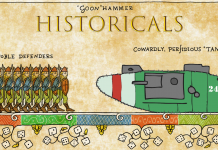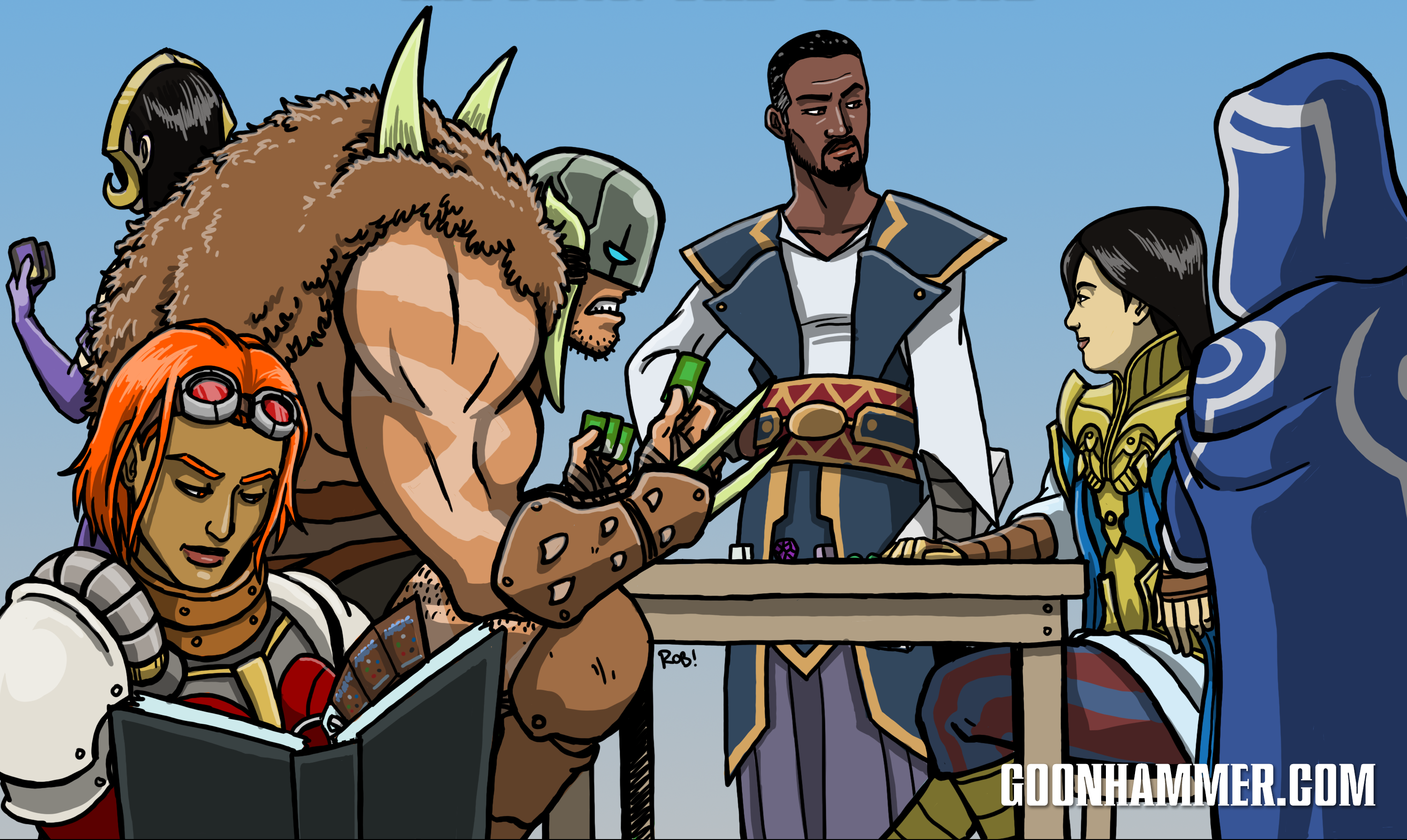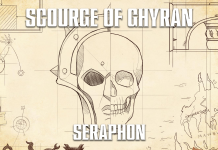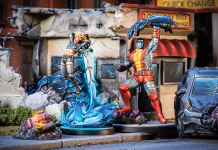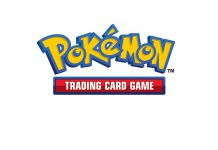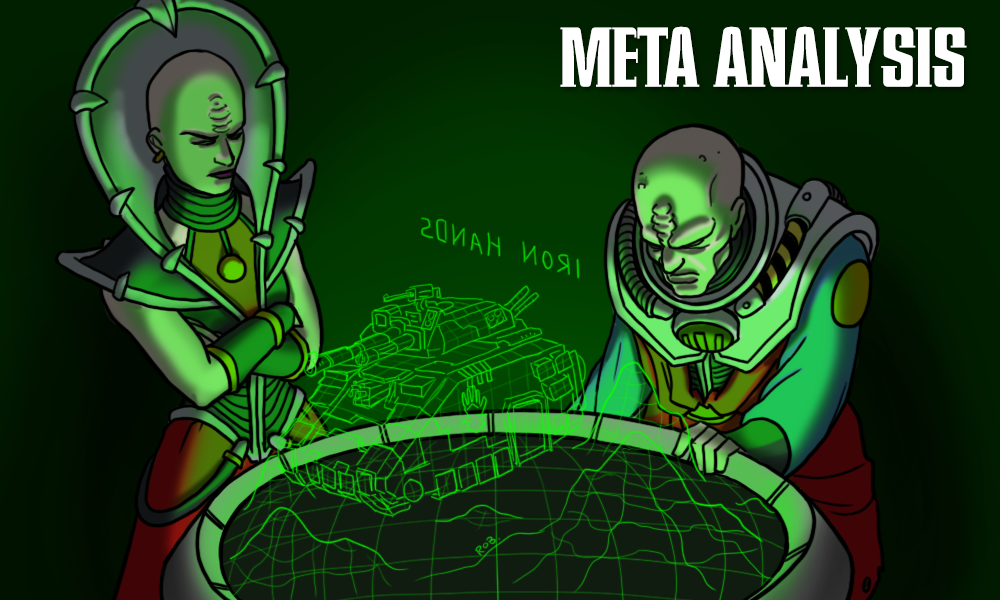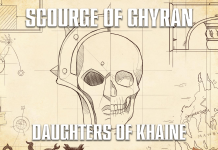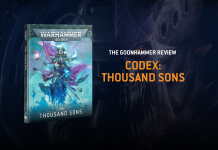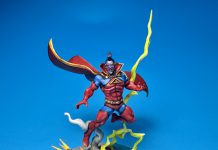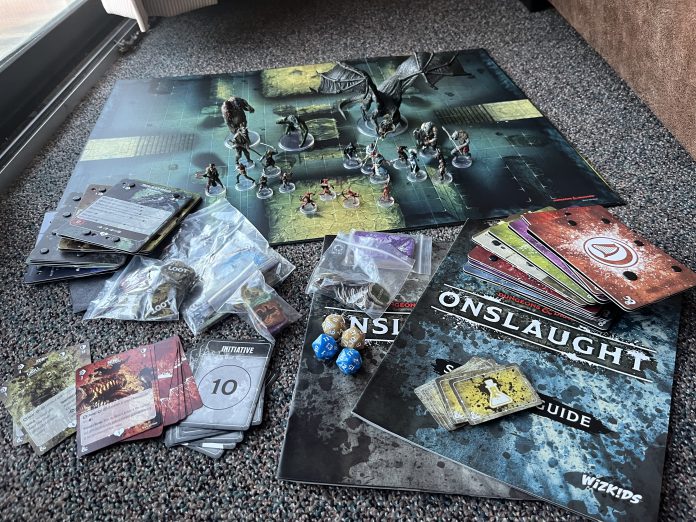Dungeons & Dragons: Onslaught distills D&D combat to a two-player system, creating a fast-paced skirmish game with surprisingly good pre-painted minis. It’s a perfect offering for the kind of player who just wants to power through to the next encounter, but it may surprise even those who are more story focused.
That’s why I was surprised by my enjoyment; my ideal campaign maxes out at about 20 percent combat and that should be at least tangentially plot-relevant. It’s fun to use your powers and abilities and look cool, but the game is all about story for me.
Onslaught turned out to be so fun because it cuts out anything else. There are named characters with unique powers and miniatures, but you really get to revel in the strategic possibilities of the game as their own thing.
Speaking of miniatures: the high price-point for the Onslaught game will likely be a problem for a lot of customers, which is unfortunate because that is probably due to the number of minis included.
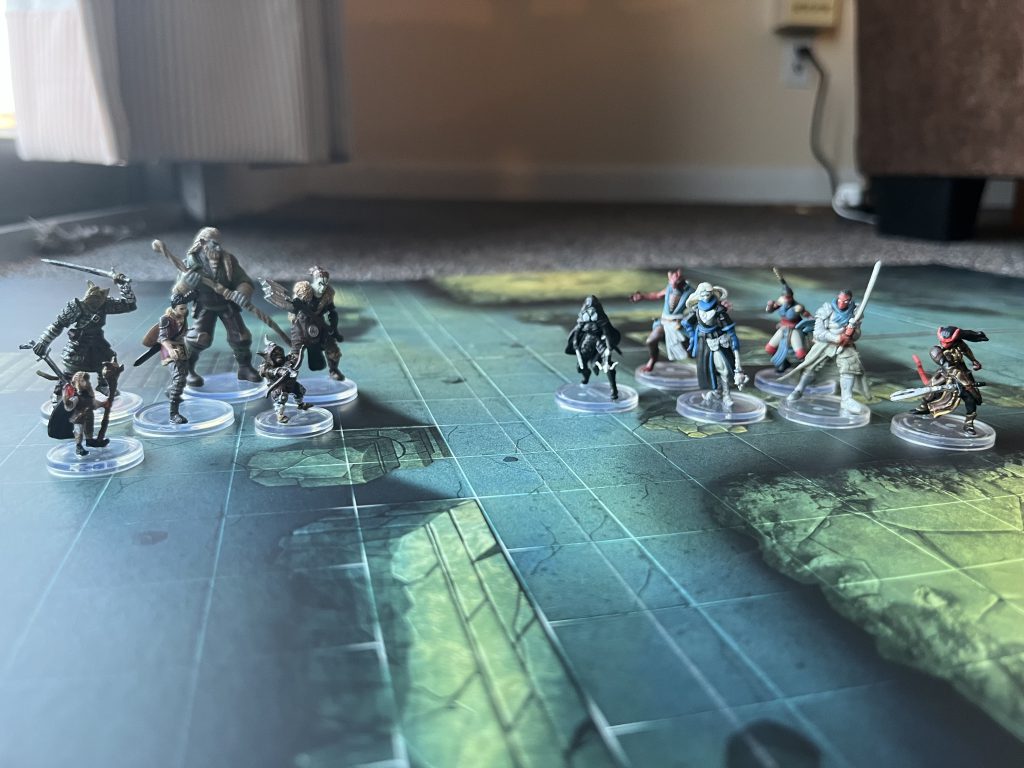
The base game is about $140 and includes 21 painted miniatures, the biggest of which is a Young Black Dragon. Searching through WizKids products, I found that comparable unpainted minis run $5-$15 and painted minis seem to run about twice that.
You may recognize WizKids products from every game store you’ve ever been in, but if you have any misgivings about pre-paints, I don’t think they apply here. The Onslaught set isn’t going to compare to personal painting projects, but the work is very detailed and just looks nice. Notably, all these minis can be used in your games of traditional D&D too!
The singular problem that arose with my set was that one character’s head popped off, maybe in transit. No big deal: turns out that a little bit of nail glue works wonders for repairs.
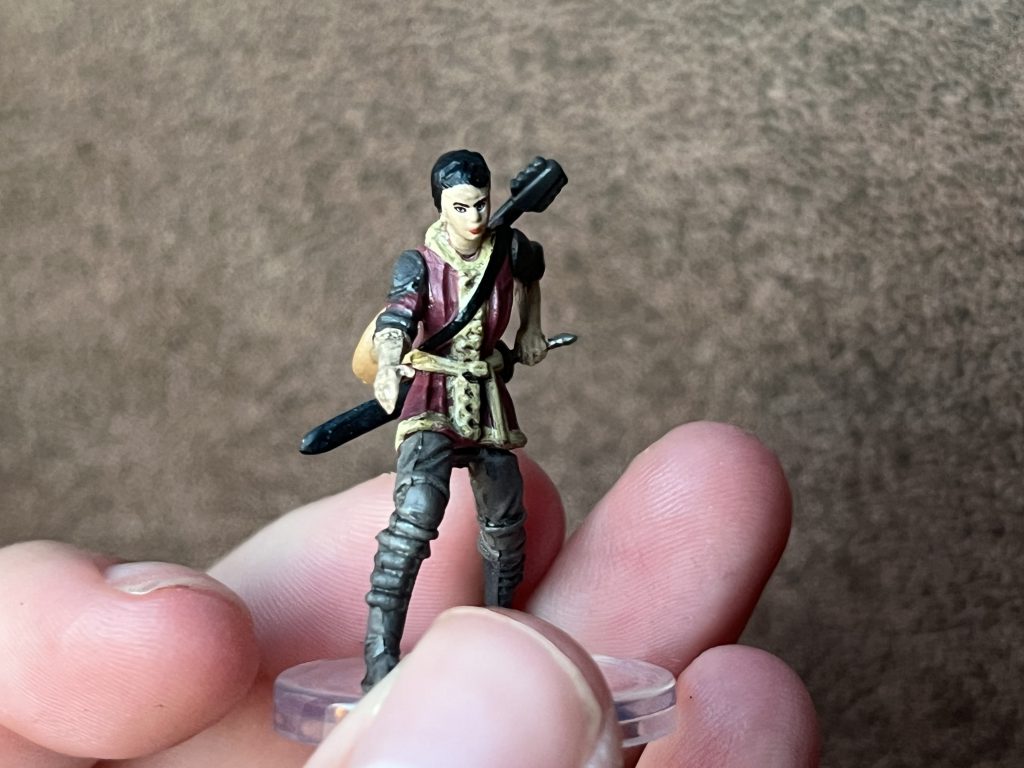
The game also includes a double-sided battle map game board, tracker cards for each character and the bigger monsters, cards for several different game mechanics and cardboard tokens for things like conditions and terrain.
Set-up is intimidating with these different pieces that all do different things, but once you’re playing, having little tokens for each different affect is really nice. Likewise, having a card with spinners to keep track of hit points, XP and cooldown for abilities for each character is pretty much the only reason you can keep track of so many moving elements at once.
The cards also allow for easy integration of some fun mechanics like armor class and speed changing as hit points drop.
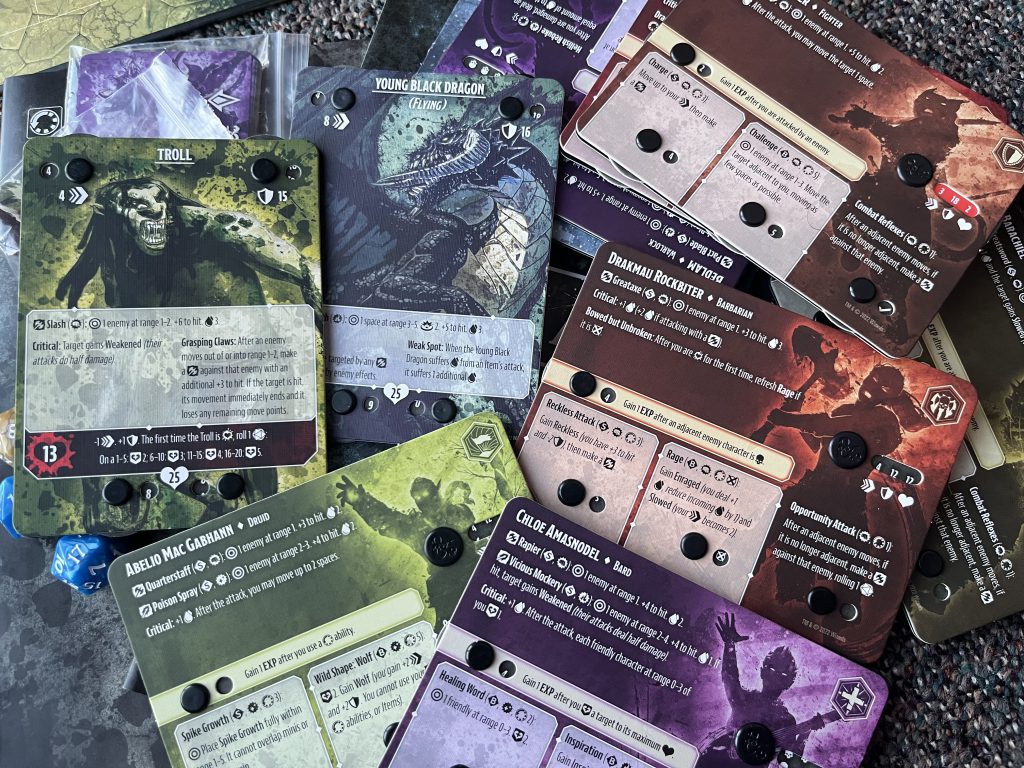
D&D players will find the game incredibly easy to pick up: character classes and abilities reflect 5e rules, but each character only has about five unique actions. You still get an action, bonus action, movement and unlimited free actions each turn and different abilities require different action types. But, hey- you can cast two spells in a turn!
The scenario guide features seven scenarios which can be played through as a single “storyline” beginning with a tutorial. There are also set up rules for deathmatch, capture the flag and area control style games that don’t have any bits of story text attached.
While each Faction comes with a six-member party, scenarios max out at five members.
The tutorial only requires three members per player, starting the Harpers out with a fighter, ranger and wizard versus the Zhentarim’s paladin, sorcerer and warlock. Yeah, I main charisma casters. Sue me.
I found the example round to be very helpful, if a bit drawn out. It covers pretty much all of the basic details I didn’t remember from reading the rulebook, especially focusing on action economy and highlighting some of the unique abilities of different characters.
It might have been harder to learn for someone with less D&D knowledge, but I played opposite another avid player who has also played more war games than I have… which maybe explains the ass-whooping I received.
If the guide suffers from any one thing, it’s overly technical language in unnecessary places.
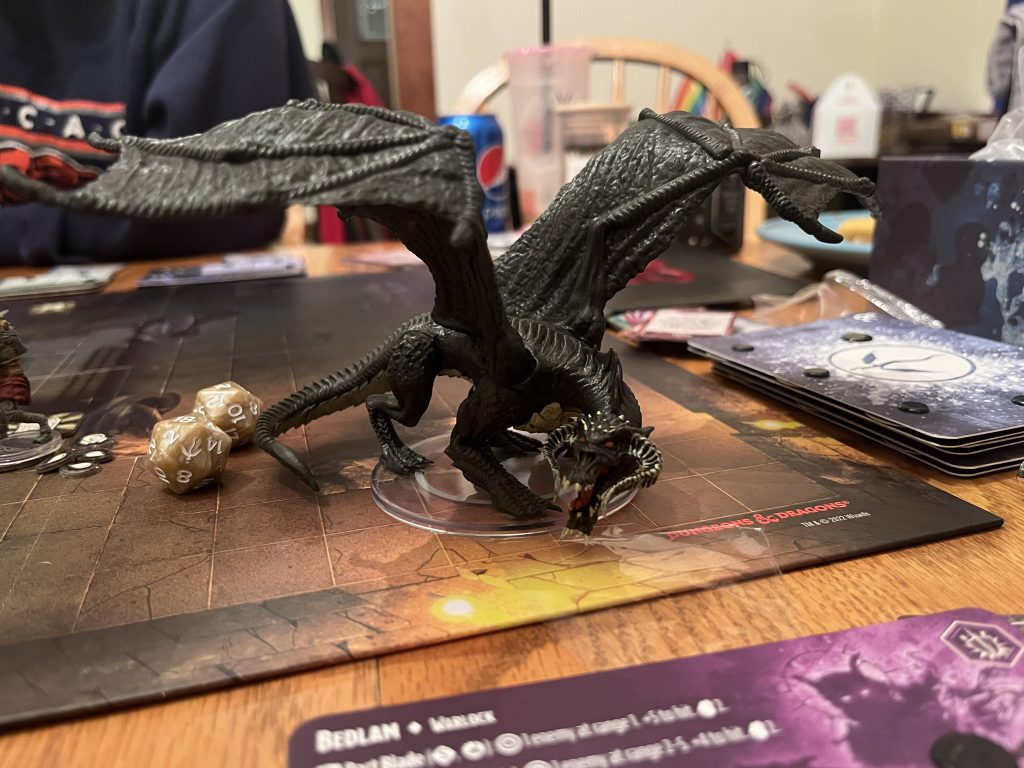
The biggest victim is the action economy. The standard action, like in D&D, can also be used to do another move action. D&D calls that a Dash action (which is also annoying, just call it movement) but Onslaught insists on explaining that the character is “downgrading” its Standard action to a Move action which is then used to generate move points.
Moving is considered a two-step process of generating the points and then spending them at one point per square, two for difficult terrain. Barring some character abilities I didn’t see, I can’t figure out why the wording on this action is so complicated. I understand this is used in other war games, but it seemed like a good place to fall back on the more simple D&D thought process of just moving up to a certain amount.
On the other hand, the cooldown mechanic makes it possible to use recognizable and cool spells in a balanced way.
Fireball is a great example: the player gets to do the big spell and then just spin the cooldown tracker to mark how many rounds until it can be used again. As long as they remember to turn it each new round, that’s all there is to knowing when the spell is available again.
The loot mechanic is also super fun: tokens with images for the different items get thrown in a grab-bag. When you loot a chest, you pull three tokens and choose your favorite based on the pictures before you get the matching card that explains what it does.
Initiative is determined by drawing cards with the play order on them. This definitely adds even more pieces to the game but does eliminate the issue of rolling the same initiative and the cards can help keep track of which character is up. It also means that you have several turns per round instead of just one as play bounces back and forth between the two parties.
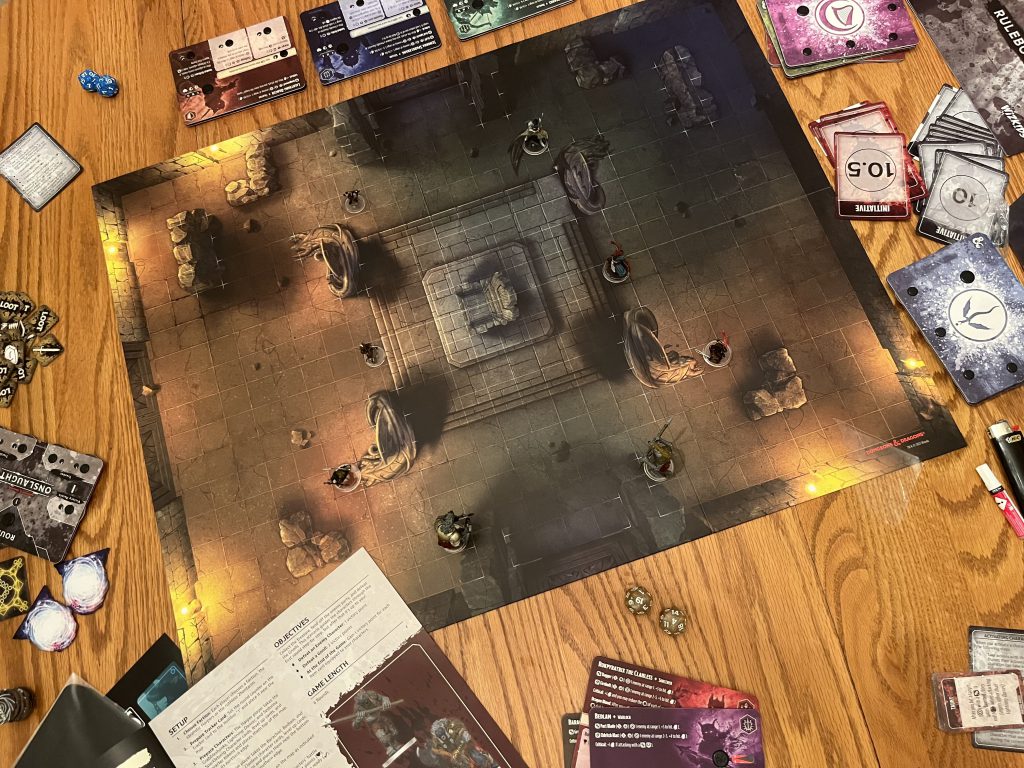
I was able to learn and play a whole game in just over two hours. Most scenarios have round limits, usually 6-8, to keep things moving along.
However, I don’t think it would be hard to generate custom scenarios with the given monsters and just play until somebody kills the other team off; we played only one extra round before my team was finished off.
Final thoughts: this game is really, really fun in a way that surprised me. I’m absolutely looking forward to getting another chance to play. The minis, board and other game pieces are all really nice quality and the rules are explained well- though again we are D&D familiar. It just might be too expensive for an average player to get into.
I’m excited to see how WizKids plans to integrate existing miniatures back into the game and expand upon this base as they have already announced some new factions and scenarios to come out in the near future. The future potential is as vast as, well…Dungeons & Dragons!


